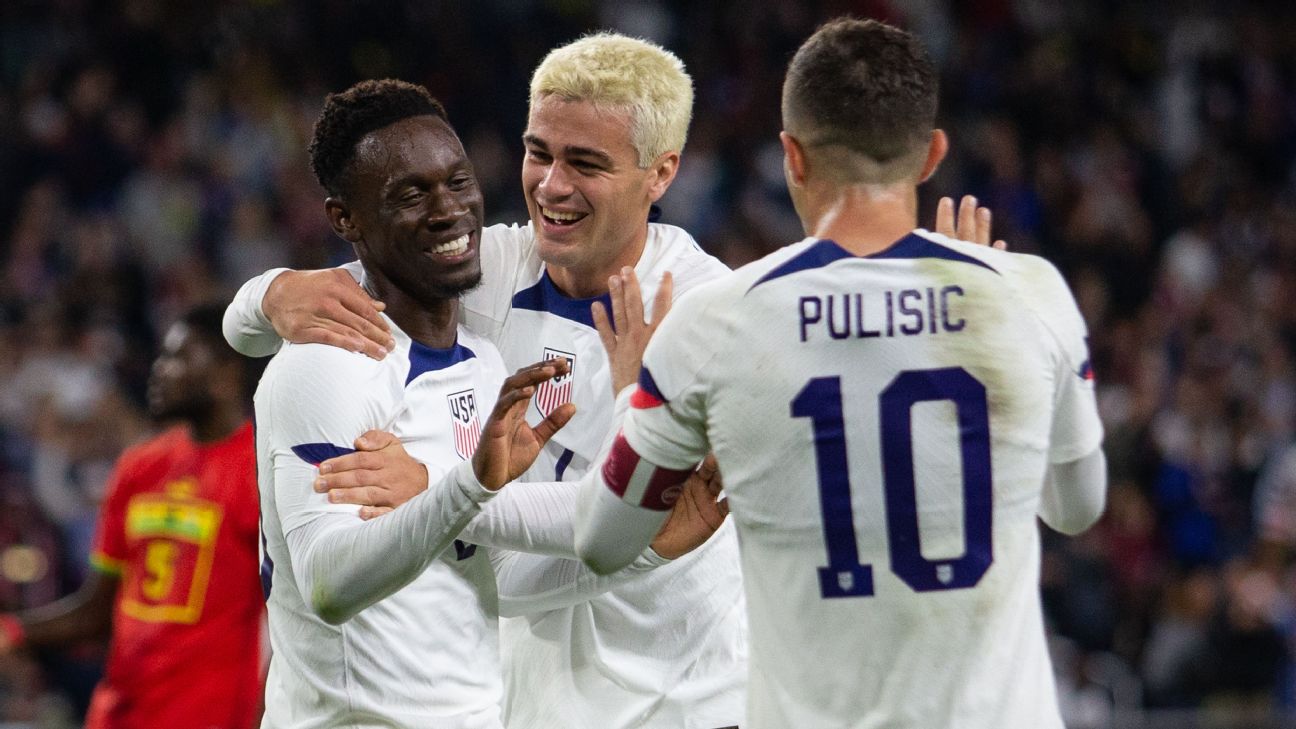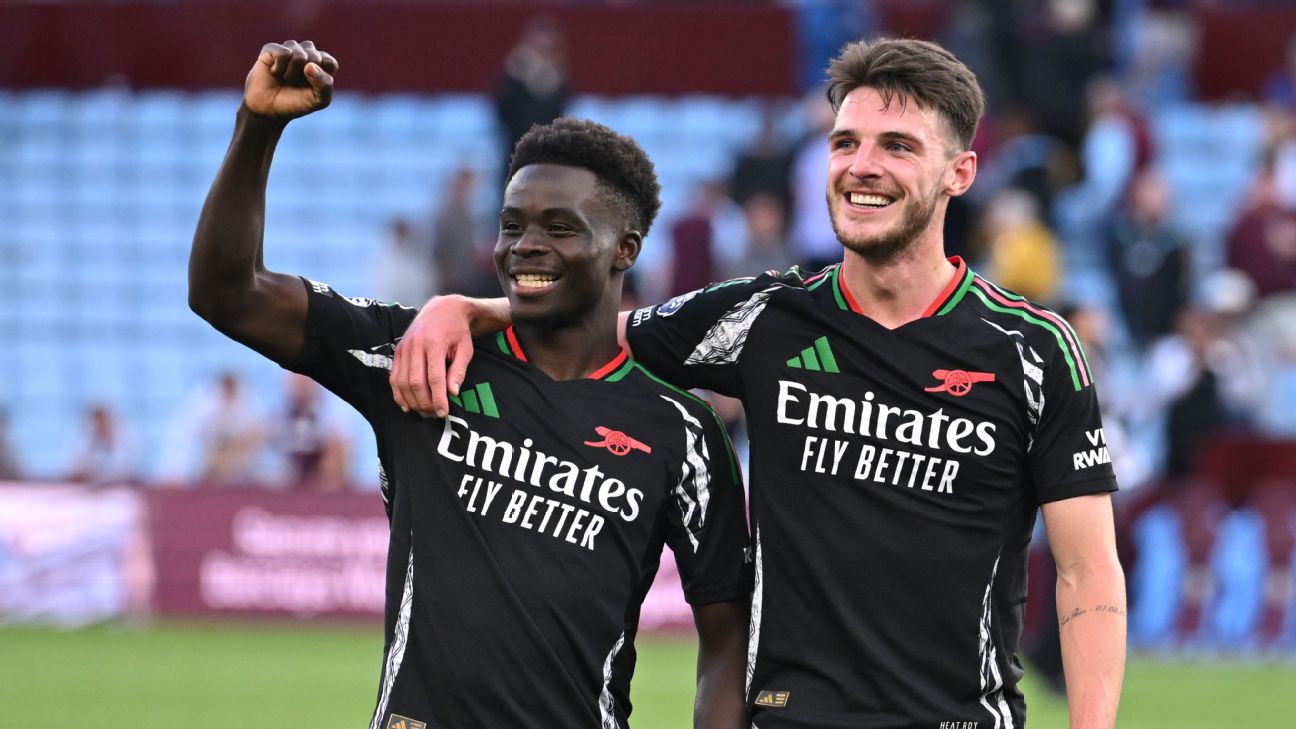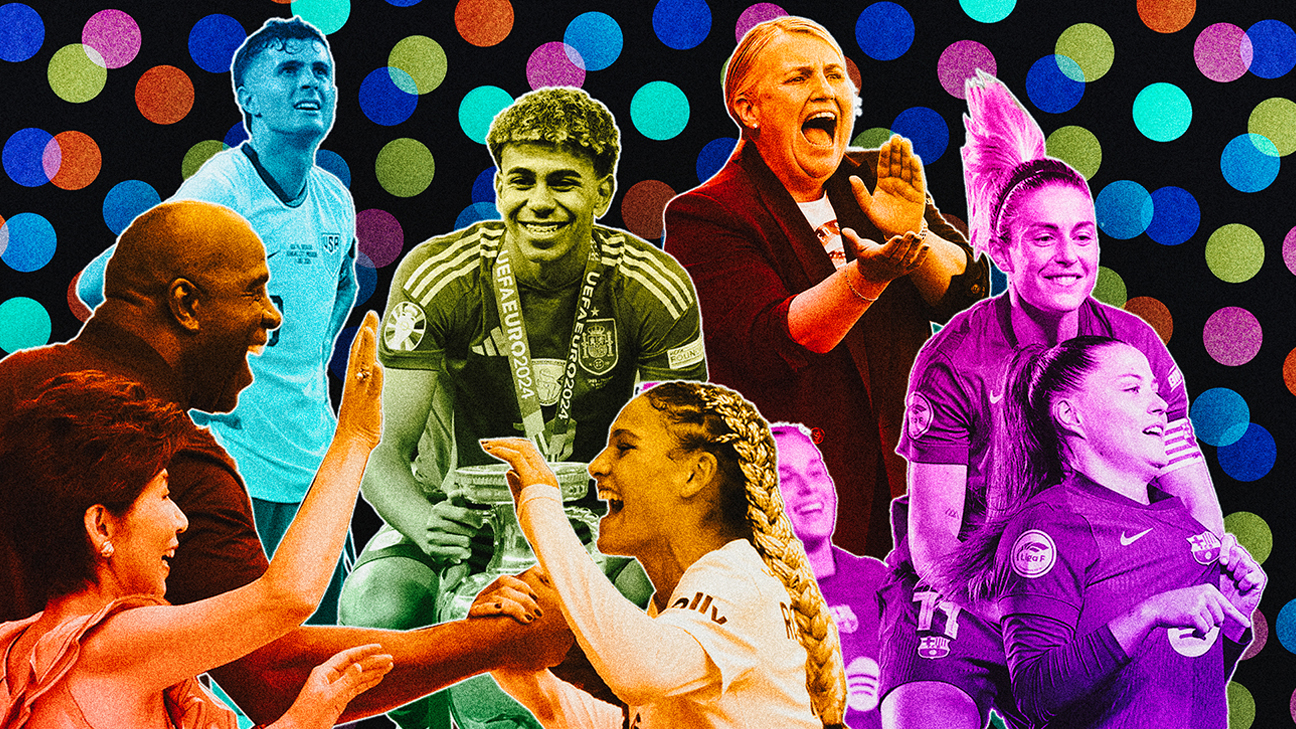Are you a U.S. men’s national team fan? If not, congrats; self-care is very important. If so, what will you remember 2023 as?
After what was ultimately a very successful 2022 — qualifying for the World Cup and then playing quite well at the World Cup — 2023 was, well, what exactly? Although I’m sure plenty of you will disagree with the assertion from the previous sentence — that the U.S. played quite well in Qatar — at least they played. This is American soccer’s golden generation, and Christian Pulisic, Weston McKennie, Tyler Adams, Yunus Musah, Sergiño Dest and Gio Reyna all played in their first World Cup. That’s meaningful, no matter the result.
The United States Soccer Federation (USSF) decided to follow that up with six months of interim managers — only to just rehire Gregg Berhalter, the guy who was the manager in Qatar. Thanks to the USSF’s extended coaching search for the person who was there the whole time, the USMNT only played two competitive soccer games under Berhalter in 2023, and zero of those games featured the team’s two most important players in 2022: the captain and the vice-captain, Adams and Pulisic.
Although it was close, it wasn’t quite a lost year for the program. So, with qualification for the Nations League semifinals clinched and a wrap on this competitive year for the USMNT, let’s see if we glean a couple of lessons from 2023 and set a goal for 2024.
What did we learn about the USMNT in 2023?
On the field, I don’t think we learned much at all. And how could we? The A-team played a total of six competitive games. But that’s almost how many games they played at the World Cup, you say. And to that, I respond: You’re making your point for me.
You don’t really learn all that much at the World Cup; it’s too random to make any definitive statements. The intervening years are when, yes, you’re trying to qualify for the World Cup. But more than that, the intervening years are really just a chance for managers to build up their own knowledge about their squads: Who plays well with whom, whose performance changes when they’re not within the structured environment of the club game, what is a realistic performance standard for this collection of players, and what arrangement of these players gets the most out of them?
In terms of learning anything about this team as a whole, 2023 was mostly a wash. Of course, there were exhibition games against the likes of Ghana and Germany under Berhalter, too, but friendly performances confuse perception more often than they correct it. There are unlimited subs, for one, and you never really know how hard anyone on the field is playing or how much each manager is trying to win.
– Stream on ESPN+: LaLiga, Bundesliga, more (U.S.)
The biggest positive from 2023, though: The team didn’t fall apart without Adams.
As the only true ground-eating ball-winner in the player pool, it felt like Adams was irreplaceable. Among all midfielders in Europe’s Big Five leagues over the past 365 days, Adams ranks in the 99th percentile for tackles + interceptions per 90 minutes, and he still completes an above-average number of passes into the final third. His ability to kill off counterattacks and protect the back four allowed the USMNT to play a pair of aggressive midfielders ahead of him, and a pair of aggressive attacking full-backs out wide of him. And unlike many other ball-winning defensive midfielders, he wasn’t a net-negative with the ball, either.
In a vacuum, there are more talented players than Adams in the player pool, but there isn’t another player like Adams. Losing a true attacking star like Pulisic would be a massive blow, but Berhalter would just slot in another player at left wing and the team’s style of play wouldn’t have to change. Without Adams, the U.S. couldn’t just drop someone else into the exact same holding midfield role without it all falling apart.
That might still be true, but it wasn’t in the Nations League. With a midfield of just Musah and McKennie against Mexico and then a midfield of Musah and Brenden Aaronson against Canada, the USMNT legitimately dominated two other top teams in Concacaf. There’s not as much to glean from the matches against the much weaker Trinidad and Tobago in any structural sense. (The big takeaway from those matches: If anyone in the NFL needs a replacement punter, Dest is available.) But there’s at least some evidence from this year that the USMNT isn’t as reliant on its injury-prone captain as it seemed like it was in Qatar.
The other main weak point that emerged at the World Cup: no strikers! And as we wrap up 2023, something has shifted and we may have already entered a brave new world: the USMNT now have multiple strikers.
After playing for England at the youth level, Folarin Balogun made his USMNT debut in October’s Nations League semifinal win over Mexico, and scored the winner against Canada in the final.
Last season with Stade de Reims, he genuinely looked like a star in the making. Most of the players who have played at his level, at his age, went on to become upper-tier pros. His form earned him a €30 million move to AS Monaco over the summer, and it has been a struggle so far. Last season, he attempted 3.6 shots at 0.18 expected goals (xG) per shot; this year, with a better team, he’s attempting 2.5 shots at 0.08 xG/shot. Fewer shots and worse shots is a recipe for a sudden decline, but it’s still only 500-ish minutes, and he’s still only 22 years old. Plus, if Balogun’s current level at Monaco ends up being his career-long level, he’ll still probably be the best striker to ever play for the USMNT.
And then there’s Ricardo Pepi.
Unlike Balogun, Pepi’s career has been characterized by brief bursts of hot finishing, unsupported by an ability to get good shots or lots of shots. After an impressive finishing spell with FC Dallas and early on in World Cup qualifying, he moved to FC Augsburg in the Bundesliga, where he didn’t score a goal in the half-season he spent there. That then led to a move to FC Groningen last year. They were relegated in his one season with the club, but Pepi scored 12 goals, once again powered by the unsustainable shot conversion of 7.2 xG into 12 goals.
The cycle continued with Pepi then earning a move to Dutch giants PSV Eindhoven. He still hasn’t started a league match — 33-year-old Luuk de Jong is holding him out of the XI — but he’s been lights-out off the bench. He has attempted seven non-penalty shots in 150 minutes of substitute action for an absurd 2.4 xG. These are all of those shots, sized by the quality of the chances:
Pepi is two years younger than Balogun; there’s still plenty of time for him to develop into a full-time starter. He has flourished off the bench for both club and country, though. He’s the first player in USMNT history to score five goals as a sub in a calendar year.
If you zoom in too far, 2023 could seem like a disappointment for both players: Balogun hasn’t kept up his pace from Reims, while Pepi can’t supplant De Jong. If you zoom out a little bit, though, perhaps there’s something of a symbiotic silver lining. Maybe Balogun becomes more efficient over a shorter time frame, and maybe Pepi’s limited skillset is more effective against tired legs. I’m not sure the move is to play both of them together, though, as we saw in Port of Spain on Tuesday night.
The overarching goal for 2024: build more depth
A year later, my main takeaway from Qatar wasn’t related to tactics or the manager. No: it had to do with talent.
The USMNT had nine high-quality starters at the World Cup: Matt Turner, Tim Ream, the two full-backs (Dest and Antonee Robinson), the entire midfield (Adams, Musah and McKennie), and the two wingers (Pulisic and Timothy Weah). That was enough to be competitive against England and the Netherlands, but still not enough to make a deep run in the tournament. Yet the team was significantly worse after they made subs in any of the matches because of the lack of depth, and they struggled to turn their possession into high-quality chances.
Across all the Nations League matches in 2023, Turner was the most-used keeper, Robinson and Dest the most-used full-backs, McKennie and Musah the most-used midfielders, and Pulisic and Weah the most-used wingers. Ream was the second-most-used center-back, after Celtic’s Cameron Carter-Vickers, while Reyna played the most minutes at attacking midfield, and Balogun played the most striker minutes despite not being eligible for all of the games. All of those guys played more than 200 minutes, and so did Pepi, right-back Joe Scally, and midfielders Aaronson and Luca de la Torre.
We can pencil Balogun and Reyna in as effective additions to those nine core World Cup players; they’ve both done it at a high level in Europe already. Can Carter-Vickers, Scally, Aaronson and De La Torre also contribute significant high-level minutes? Someone is going to have to if this team is going to reach another level.
For as promising as the 2022 World Cup was in terms of creating a foundation for the future — the youngest team in Qatar, getting out of the group — the dirty little secret is that the USMNT were very healthy for the World Cup. Pulisic and Adams, in particular, are both quite injury-prone, and they each played every relevant minute in the tournament. McKennie, Dest and Musah all nearly did the same. There’s a good chance at least one of them isn’t fit come 2026. On top of that, Ream turned 36 in October; he’ll be 39 if he plays at the next World Cup.
Think of it this way: Sixteen players started at least two matches for Argentina at the 2022 World Cup. For France, 18 players played at least 90 minutes. As hosts and with this generation all aging into their primes, the USMNT’s goal should be a deep run in 2026. The core of that team already exists — we saw it last year — but they’re going to need seven or eight more reliable players in order to go much further than they did in Qatar. With the Nations League finals and the Copa America, 2024 is the year Berhalter needs to start figuring out who all of those other guys are.



